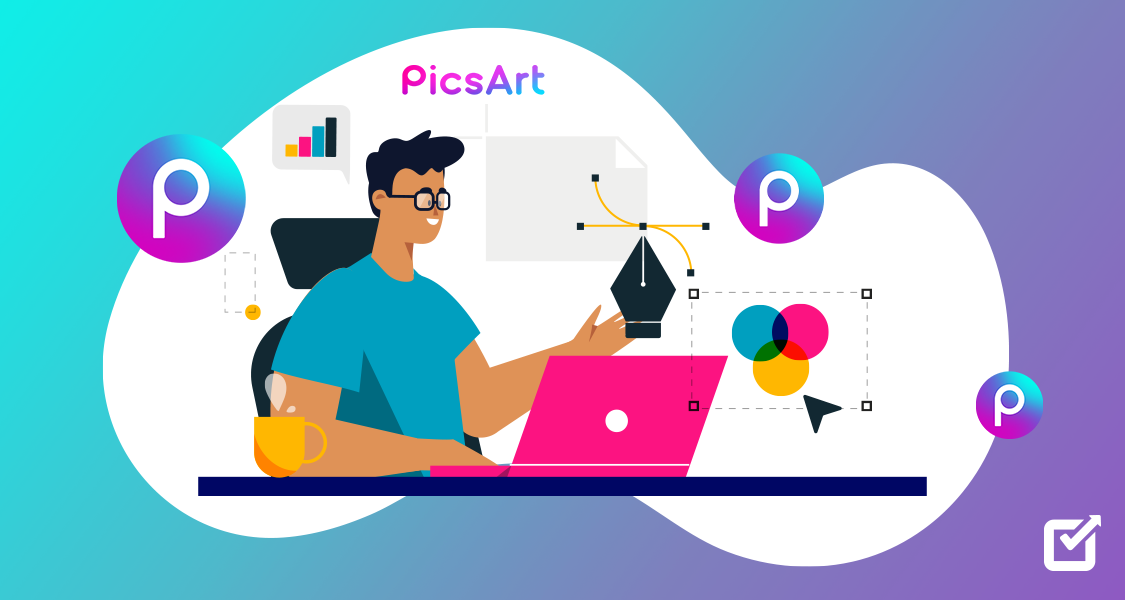If you still believe in gut feeling and past trends to make strategies for your business, I have bad news for you.
Intuition and guesswork are no longer enough to stay ahead in today’s competitive business environment. To thrive, you need a deeper understanding of data and what’s a better way to do business in 2024.
AI Insights offer a revolutionary approach, empowering businesses to extract hidden useful information from their raw data and translate it into actionable strategies for success.
Imagine predicting customer moves before they even consider leaving or forecasting a surge in demand for a specific product based on seemingly unrelated social media trends. This is the power of AI insights.
In a world overflowing with data, this powerful combination of artificial intelligence and analytics empowers businesses and thousands of brands like yours to see beyond the surface, predict market shifts, and make strategic decisions with unprecedented confidence, ultimately driving more growth and revenue your way.
So are you ready to discover how AI is revolutionizing decision-making and the transformative impact of AI on business intelligence and innovation? Then let’s get started!
What Are AI Insights?
AI Insights represent a revolutionary approach to data analysis and decision-making, powered by artificial intelligence (AI) technologies. Unlike traditional data analytics that focuses on descriptive and diagnostic analysis, AI insights delve deeper into predictive and prescriptive analytics, offering businesses a holistic view of their data.
Make your SMM easier With Social Champ AI Assistant
From content creation to image designing and sentiment analysis, Champ AI Suite has everything you need!
At the core of AI insights are advanced machine learning algorithms that can process vast amounts of data in real time, uncovering hidden patterns, correlations, and trends that might otherwise go unnoticed.
One of the key aspects of AI insights is its ability to provide predictive analytics. By analyzing historical data and identifying patterns, AI algorithms can forecast future trends, behaviors, and outcomes with a high degree of accuracy.
Related Article: Everything You Need to Know About AI-Generated Content in 2025
Understanding How AI Insights Are Generated
Artificial intelligence (AI) insights are like hidden gems waiting to be unearthed from a massive dataset. But how exactly does AI extract these valuable insights? It’s a fascinating process that combines several techniques:
Data Collection and Integration
The first step in generating AI insights is gathering relevant data from various sources. This can include structured data from databases, unstructured data from text documents or social media, and semi-structured data from sources like IoT devices. The data is then integrated and stored in a centralized repository for analysis.
Data Preprocessing
Raw data often contains noise, inconsistencies, and missing values that can hinder analysis. Data preprocessing involves cleaning the data by removing duplicates, handling missing values, standardizing formats, and transforming data into a suitable format for analysis. This ensures that the data is reliable and consistent before moving to the next step.
Exploratory Data Analysis (EDA)
EDA involves exploring and visualizing the data to gain a deeper understanding of its characteristics, relationships, and patterns. This stage helps identify outliers, trends, correlations, and anomalies that may influence the generation of insights.
Feature Engineering
Feature engineering is selecting, creating, or transforming features (variables) in the dataset to enhance the predictive power of machine learning models. This step involves techniques such as encoding categorical variables, scaling numerical features, and creating new features based on domain knowledge.
Model Training
Machine learning models are trained using historical data to learn patterns and relationships that can be used to make predictions or generate insights. Various algorithms such as regression, classification, clustering, and deep learning are employed based on the nature of the problem and the type of insights required.
Prediction and Inference
Once the models are trained, they are used to make predictions or infer patterns from new, unseen data. This can include predicting customer behavior, identifying abnormality, segmenting data, forecasting trends, or recommending actions based on the insights generated.
Validation and Evaluation
The generated insights are validated and evaluated using metrics, benchmarks, and domain knowledge to ensure their accuracy, relevance, and reliability. This step helps in refining the models and improving the quality of insights over time.
Deployment and Monitoring
Finally, the AI models and insights are deployed into production environments where they can be used to support decision-making processes. Continuous monitoring and feedback loops are established to track performance, detect drifts, and retrain models as needed to maintain the relevance and accuracy of AI insights.
Related Article: Chatbot Analytics 101: Essential Metrics to Track in 2025
How AI Insights Help Businesses
AI insights help businesses by providing data-driven decision-making capabilities and optimizing processes across various fields, leading to improved customer experiences, increased efficiency, and strategic growth. Here is a detailed explanation of how it actually helps.
Government Agencies
AI insights have become indispensable in the realm of government, driving data-driven policy-making and efficient resource allocation. By using vast datasets and public sentiment analysis, AI informs strategic decisions, ensuring effective governance.
AI-powered chatbots and virtual assistants offer round-the-clock citizen services, enhancing engagement and satisfaction. Moreover, AI’s role in fraud detection, emergency response, and real-time data analysis during crises strengthens government capabilities and responsiveness.
Marketing and Advertising
In the realm of marketing and advertising, AI insights have become a cornerstone of success for businesses. These insights delve deep into consumer behavior, analyzing trends, preferences, and engagement patterns across various channels.
Moreover, AI insights enable marketers to personalize content at scale, creating tailored experiences for individual consumers based on their browsing history, demographics, and past interactions. This level of personalization not only enhances customer engagement but also drives conversion rates and boosts brand loyalty.
Call Centers
AI insights are a game-changer for call centers as they are revolutionizing customer service strategies. Through sophisticated analysis of customer interactions, sentiment, and feedback, AI empowers agents to deliver personalized solutions promptly, elevating customer satisfaction levels.
Automation of tasks such as call routing and FAQs streamlines operations, reducing response times and enhancing overall efficiency. Predictive analytics further enhances service quality by anticipating customer inquiries and optimizing resource allocation.
Hospitality Industry
In the hospitality sector, AI insights are reshaping the guest experience, revenue management, and operational efficiency. Through analysis of guest preferences and behaviors, AI personalizes services and promotions, fostering loyalty and satisfaction. Revenue optimization strategies driven by AI maximize profitability through dynamic pricing, efficient room allocations, and inventory management.
Automation streamlines operations such as check-ins, bookings, and guest interactions, ensuring a seamless experience. AI also plays a crucial role in analyzing guest feedback, enabling continuous improvement and maintaining a positive online reputation.
Finance and Banking
In the finance and banking sector, AI insights play a transformative role in driving efficiency, security, and customer experience. These insights use advanced analytics and machine learning algorithms to extract valuable information from vast amounts of financial data.
One of the key benefits of AI insights in finance and banking is enhanced risk management. AI marketing insights algorithms analyze historical data, market trends, and customer behavior to identify potential risks such as fraudulent activities, credit defaults, and market fluctuations.
This proactive approach enables financial institutions to implement preventive measures, mitigate risks, and protect assets and investments.
Advantages of Using AI for Generating Data Insights
Using AI for generating data insights offers several advantages that significantly impact business operations and decision-making processes:
Advanced Data Analysis
AI algorithms can analyze large volumes of data at scale and speed, uncovering hidden patterns, correlations, and trends that may not be apparent through traditional analytics methods. This advanced data analysis provides deeper and more accurate insights into business performance, customer behavior, market trends, and operational efficiency.
Predictive Capabilities
AI enables predictive analytics by using historical data to forecast future outcomes and trends. This predictive capability empowers businesses to anticipate market shifts, customer needs, and potential risks, allowing for proactive decision-making and strategic planning.
Automation and Efficiency
AI automates data analysis processes, reducing manual effort and time required for generating insights. This automation leads to increased operational efficiency, faster decision-making cycles, and the ability to handle larger datasets without compromising accuracy or quality.
Improved Decision Making
AI insights facilitate data-driven decision-making by presenting relevant information, trends, and recommendations in a clear and understandable format. This helps decision-makers make informed and strategic decisions that align with business goals, drive growth, and mitigate risks.
Scalability and Flexibility
AI data insights are scalable and adaptable to changing business needs and data complexities. Whether handling large datasets or analyzing diverse data sources, AI can scale to meet business requirements and provide flexible solutions for various uses, cases and industries.
Using AI data insights for generating content offers businesses a competitive edge by unlocking valuable information, driving innovation, optimizing processes, and improving overall business performance.
20 Tools for AI Insights
Here are 20 tools that businesses can use for AI-driven insights:
Social Champ
Social Champ is a versatile social media management tool designed to streamline the process of scheduling, managing, and analyzing social media content across multiple platforms.

Social Champ It empowers businesses and marketers to enhance their online presence efficiently while providing insights to optimize their social media strategies. With features like automated publishing, detailed analytics, and team collaboration, Social Champ is an essential tool for effective social media management.
ChatGPT
An AI-powered chatbot and content generation platform that uses natural language processing (NLP) to understand and respond to user queries or generate text-based content.

ChatGPT Jasper AI, Inc.
A comprehensive AI platform specializing in natural language processing (NLP) and data analytics, enabling businesses to extract valuable insights from unstructured data sources.

Jasper AI, Inc. Playground AI
A versatile AI platform that offers data analysis, insights generation, and visualization capabilities, making it a valuable tool for businesses seeking AI-driven insights data solutions.

Playground AI MidJourney
An AI-powered customer journey analytics platform that helps businesses track and analyze customer interactions across various touchpoints, providing actionable insights for improving customer experiences.

MidJourney QuillBot
An AI-powered paraphrasing tool that helps users rewrite and paraphrase text while retaining the original meaning, useful for content creators and writers.

QuillBot IBM Watson
A powerful AI platform offering cognitive computing, data analysis, and insights generation capabilities, suitable for a wide range of applications including healthcare, finance, and customer service.

IBM Watson Grammarly
An AI-driven writing assistant that checks grammar, style, and readability, helping users improve the quality and clarity of their written communication

Grammarly Synthesia
Synthesia is a video generation platform that enables users to create personalized videos using AI-generated content and virtual avatars, suitable for marketing and communication purposes.

Synthesia LyricStudio
An AI platform specializing in generating song lyrics and music insights, offering creative solutions for musicians and songwriters.

LyricStudio RoomGPT
AI chatbot and virtual assistant platform that utilizes natural language understanding (NLU) to automate conversations and provide personalized support to users.

RoomGPT TIDIO
An AI-powered chatbot and customer engagement platform that enhances website interactivity and provides automated support to visitors.

Tidio Brand24
AI-powered social media monitoring and analytics platform that tracks brand mentions, sentiment analysis, and competitive insights across various social media platforms.

Brand24 Zest AI
An AI platform specializing in credit scoring and risk management, leveraging machine learning algorithms to assess creditworthiness and manage lending risks.

Zest AI Acrolinx
An AI tool for content optimization and brand consistency, ensuring that content aligns with brand guidelines and maintains high-quality standards.

Acrolinx Amazon Machine Learning
A cloud-based AI and machine learning service offered by Amazon Web Services (AWS), providing scalable solutions for data analysis, predictive modeling, and insights generation.

Amazon Machine Learning Hootsuite
A social media management platform with AI-driven analytics and scheduling features, enabling businesses to manage and optimize their social media presence effectively.

Hootsuite Descript
An AI tool for audio and video transcription, editing, and collaboration, offering innovative solutions for content creators and media professionals.

Descript Crayon
An AI-driven competitive intelligence platform that helps businesses gather and analyze competitive data, market trends, and industry insights for strategic decision-making.

Crayon Writer Sonic
An AI tool for content generation and copywriting, capable of creating engaging and SEO-friendly content for websites, blogs, and marketing materials.

Writer Sonic
Conclusion
In conclusion, AI insights have emerged as the cornerstone of data-driven decision-making for businesses across various industries. By harnessing the power of artificial intelligence, businesses can unlock valuable insights from complex datasets, enabling them to make informed decisions, optimize processes, and drive strategic growth.
AI insights provide a competitive edge by offering predictive capabilities, personalized experiences, and real-time analytics, empowering businesses to stay agile, responsive, and ahead of market trends. As the digital landscape continues to evolve, AI marketing insights will continue to play a pivotal role in shaping the future of business intelligence and innovation.


































